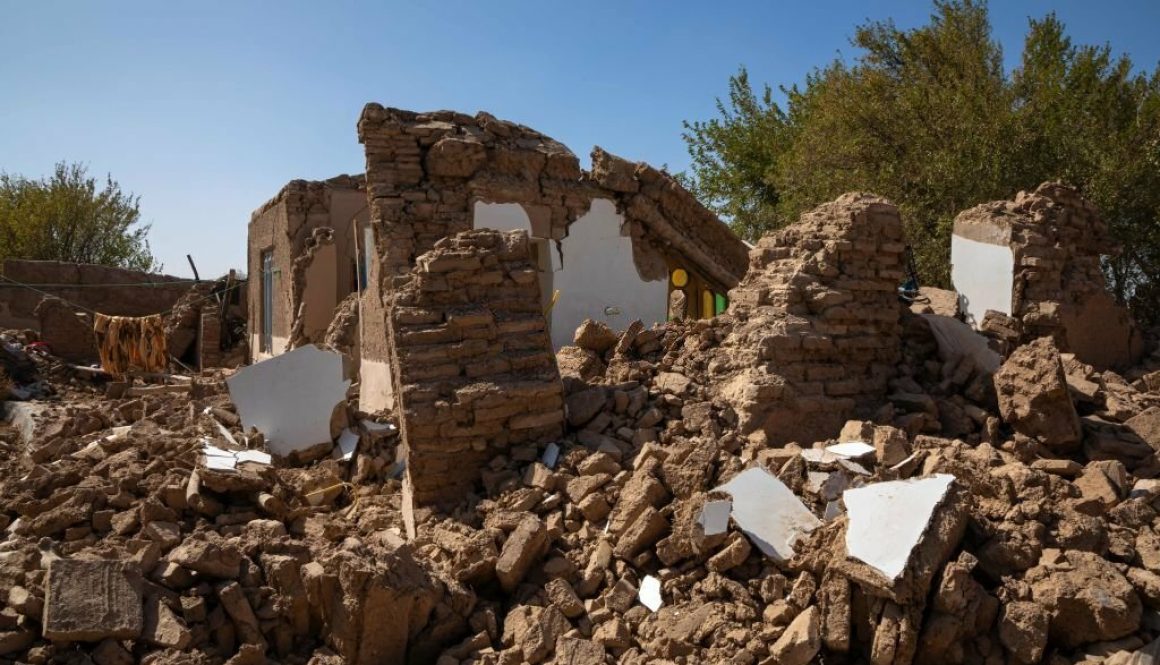Another earthquake strikes Afghanistan, killing more than 2,000 people
More than 2,000 individuals have lost their lives in the aftermath of a powerful earthquake that struck western Afghanistan, according to the Taliban’s statement on Sunday, October 9th. This catastrophe has struck the nation during a time of severe economic hardship and there is a concern that the casualty count may increase further.
The earthquake, measuring 6.3 on the Richter scale, occurred on Friday morning, October 7th, approximately 40 kilometers west of Herat city in the western Herat province, which is the third-largest city in Afghanistan. Zabihullah Mujahid, the Taliban spokesperson, confirmed that the death toll stands at 2,053 people, with over 1,240 individuals injured and 1,320 houses either completely or partially destroyed.
Earlier assessments by the United Nations suggested a lower toll. Reports indicated that nearly 500 houses were destroyed, and 135 buildings sustained damage, according to the UN’s Office for the Coordination of Humanitarian Affairs (OCHA). OCHA stated, “In total, 4,200 people (600 families) are assessed to have been affected to date.” Images depict extensive debris and rubble following building collapses, with survivors gathering in the streets for safety.
The UN mentioned that “Mahal Wadakah is understood to be the worst affected village,” reporting at least 20 deaths. Other severely impacted areas include Dasht Hows, Bahadorzai, Zoryan, and Koshkak. Nonetheless, rescue teams have been dispatched to the Herat province, and relief supplies including food, water, medicines, and clothing have been sent to the affected area, as stated by Mojahid. The initial earthquake was also felt in neighboring provinces, such as Badghis and Farah, and was followed by numerous aftershocks. Additionally, an estimated 300 families (around 2,100 people) are reported to have been displaced to Herat City, where they are residing in abandoned structures.
Afghanistan’s financial condition also has been very disturbed by the freezing of foreign reserves by Washington and its allies. These developments have severely crippled an already aid-dependent economy. The World Bank warned that nearly two-thirds of Afghan households are currently grappling with “significant challenges in maintaining their livelihoods.” To add more, Afghanistan has endured significant damage from a series of recent earthquakes amid an ongoing dire economic and hunger crisis, resulting in the deaths and displacement of tens of thousands. This makes it even more challenging for Afghans to recover from earthquakes, which are a recurring phenomenon in a country prone to seismic activity.
A deadly quake in March struck northeastern Afghanistan, sending residents fleeing from their homes as it brought down entire buildings and triggered devastating landslides. In June of the previous year, a 5.9 magnitude earthquake in the eastern Paktika and Khost provinces bordering Pakistan claimed more than a thousand lives. Aid organizations faced difficulties reaching victims and survivors in areas with poor infrastructure due to the coinciding heavy monsoon rains and winds. Another earthquake, measuring 5.6 on the Richter scale, occurred on January 17, 2022, in Badghis, another western province near Herat bordering Turkmenistan. It resulted in the deaths of more than 20 people and the destruction of hundreds of brick homes.
